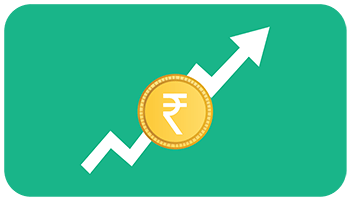The riskometer attempts to give you a complete ‘risk’ picture for the mutual fund scheme. It does this by putting a risk score on every asset class held by the mutual fund scheme. Each debt or equity instrument and other assets, such as cash, gold, and other financial instruments found in mutual fund portfolios, is assigned a particular risk value.
In the case of equities, each position in the portfolio is assigned a risk score based on three main factors:
- Market Capitalization: Small-cap stocks pose more risk than mid-cap stocks, which in turn are riskier than large-cap stocks. The risk value for each is updated every six months.
- Volatility: Stocks with substantial daily price fluctuations are assigned a higher risk value. This is calculated from a stock's price behaviour over the past two













